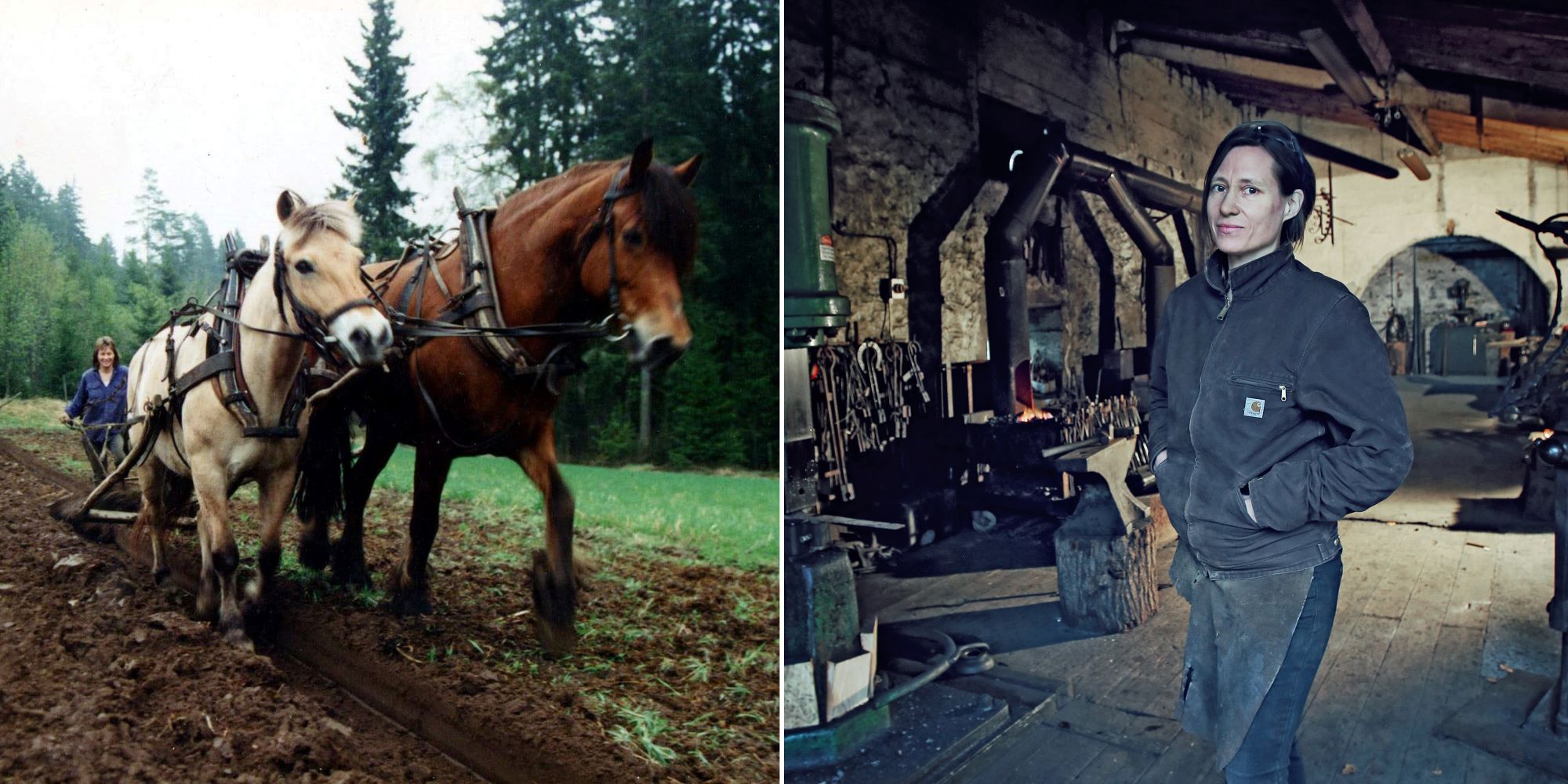My journey as a blacksmith
If you have signed up for a course at the Calnan Anhoj forge you might be wondering who your tutor is – so here is a little bit of background about female blacksmith Gunvor Anhoj:
I was born in Denmark in 1973 and have been full time blacksmithing since 1997. I am currently self-employed in the company Calnan & Anhoj, alongside fellow blacksmith Michael Calnan, since we both graduated from blacksmithing college in Hereford, UK in 2001. I mainly forge and fabricate bronze and corten steel into sculpture.

Women in traditionally ‘male professions’ are not such a big deal where I come from, so I never really thought much of it. I left school at 16 and did an apprenticeship in horticulture; most of the placements I worked on were small organic farms. On a Norwegian farm ‘Sletner Gård’ where horse-drawn ploughs, harrows and carts (as well as sleds in the winter!) were still used on a daily basis, I realised how the traditional craft of farming was very much connected with the other cornerstone crafts, as most of the tools and machinery were actively used ‘antiques’…
I had always loved woodwork – my favourite subject at school – but felt I needed to know more about metal so I signed up for a three month long welding course. By chance I heard about a blacksmithing taster course run by a well experienced guy who spent most of his time making Viking / Iron Age replicas. Following that experience I applied to volunteer at the Forge of a Danish working museum ‘Nyvang’, where I was lucky enough to spend every day for most of a year forging souvenirs for the museum shop. At this point I was totally hooked, but also wondering what a 24 year old woman was doing covered in coal dust at a museum surrounded by men three times her age 😂
When I heard about the National School of Blacksmithing in Hereford, England I applied and once accepted things where finally making sense, as I met people my own age and a craft that had been brought into the twenty first century. The first year (National Diploma) was run by the technical college and along with blacksmithing lessons it covered welding, fabrication, technical drawing, gilding, bricklaying, business studies, design and lots of other things ensuring we were able to survive in business after. You could also train as a farrier in a facility next door, but that was a different module to the more artistic / ornamental blacksmithing I was doing. At the end of the year I was awarded The Stanley Allcard Cup by The Worshipful Company of Blacksmiths for ‘outstanding ability in the traditional craft of the blacksmith’. I then signed up for a two year design-based program (Higher National Diploma) run by the Hereford College of Arts and this is where I really started to appreciate the doubling up of enjoyment in combining design with metal work, as you got to work on your own ideas instead of replicating traditional components.
Once I graduated in 2001 I set up a business with Michael, initially working from another museum forge at the National Waterways Museum on the Gloucester Docks; we would exhibit our garden sculpture and seating at Chelsea Flower Show and other similar venues. We moved to Ireland in 2007 and have had our current forge at Russborough since 2009. Notable mentions would include winning a first prize in the metalwork category at the Royal Dublin Society’s National Crafts Awards in 2011; the 2015 Millcove Award for sculpture; the chance to make Senator George Mitchell a forged bronze swan in 2016 for the recognition of his efforts in the Good Friday agreement as awarded by the New York Saint Patrick’s Day Foundation; and between myself and Michael commissions from public bodies such as the OPW, Department of Foreign Affairs, Design and Crafts Council of Ireland, Wicklow Enterprise Board and The National Lottery; but most of our creations go to private individuals who love sculpture for the garden.
I started teaching blacksmithing in 2010; the 2010-2020 program included the making of axes, fire pits, log holders, fireside tools, rams head pokers, flint strikers, candle holders, trivets, BBQ tools, door knockers, boot scrapers and Celtic replicas (you can see images of those projects here) The last few years I have purely run the beginners bladesmithing courses as they are the most popular, and have currently landed on my favourite, the so-called Iron Age knife – just as I was taught to make them back at the Danish museum forges.
“I love the iron age knife project as it gives you enough time at the anvil to get an appreciation of the challenges in forging steel, gives you a little bit of influence on the design as well as the satisfaction of leaving with a completely functional tool that looks great because of the time spent refining it.”